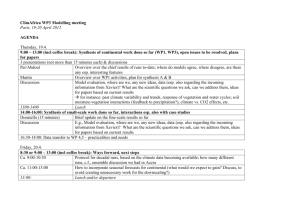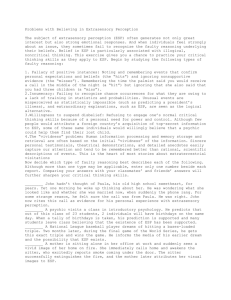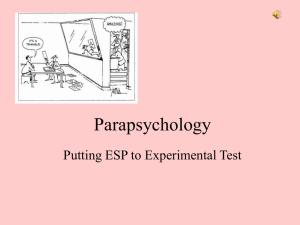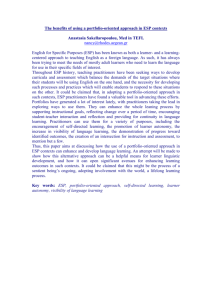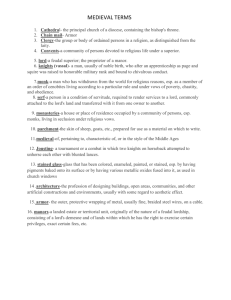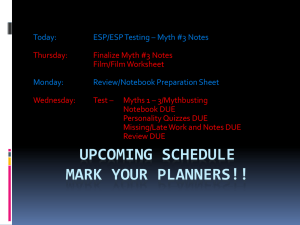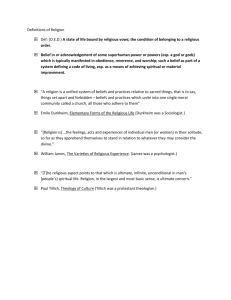anomalous/paranormal detection using psi-reading tests
advertisement
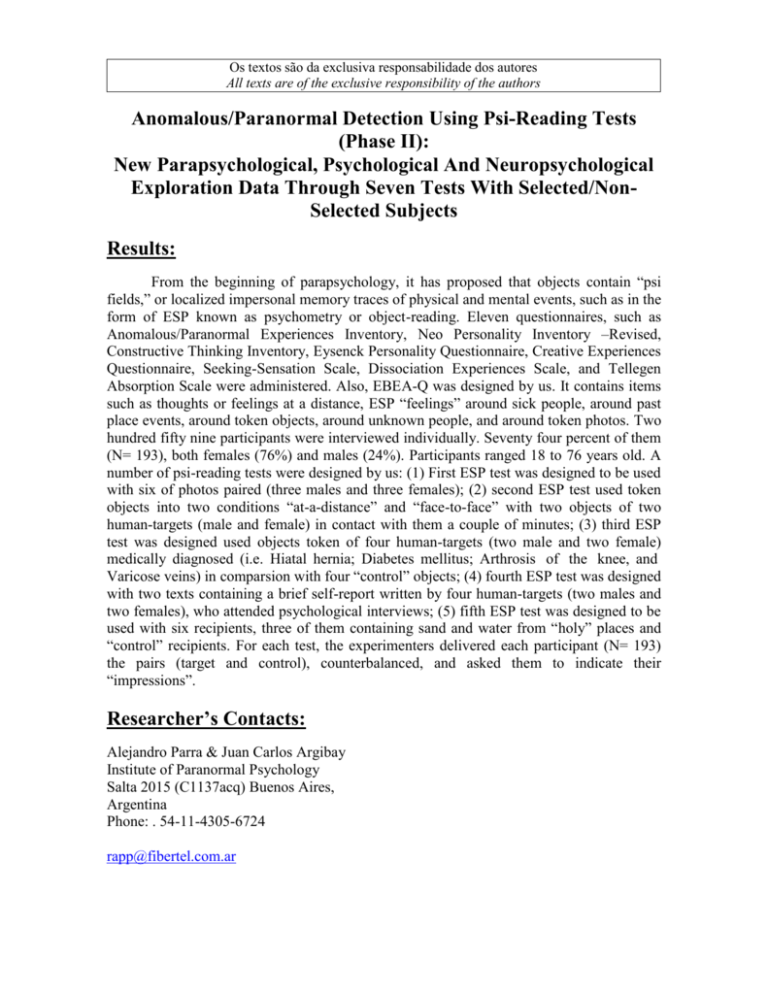
Os textos são da exclusiva responsabilidade dos autores All texts are of the exclusive responsibility of the authors Anomalous/Paranormal Detection Using Psi-Reading Tests (Phase II): New Parapsychological, Psychological And Neuropsychological Exploration Data Through Seven Tests With Selected/NonSelected Subjects Results: From the beginning of parapsychology, it has proposed that objects contain “psi fields,” or localized impersonal memory traces of physical and mental events, such as in the form of ESP known as psychometry or object-reading. Eleven questionnaires, such as Anomalous/Paranormal Experiences Inventory, Neo Personality Inventory –Revised, Constructive Thinking Inventory, Eysenck Personality Questionnaire, Creative Experiences Questionnaire, Seeking-Sensation Scale, Dissociation Experiences Scale, and Tellegen Absorption Scale were administered. Also, EBEA-Q was designed by us. It contains items such as thoughts or feelings at a distance, ESP “feelings” around sick people, around past place events, around token objects, around unknown people, and around token photos. Two hundred fifty nine participants were interviewed individually. Seventy four percent of them (N= 193), both females (76%) and males (24%). Participants ranged 18 to 76 years old. A number of psi-reading tests were designed by us: (1) First ESP test was designed to be used with six of photos paired (three males and three females); (2) second ESP test used token objects into two conditions “at-a-distance” and “face-to-face” with two objects of two human-targets (male and female) in contact with them a couple of minutes; (3) third ESP test was designed used objects token of four human-targets (two male and two female) medically diagnosed (i.e. Hiatal hernia; Diabetes mellitus; Arthrosis of the knee, and Varicose veins) in comparsion with four “control” objects; (4) fourth ESP test was designed with two texts containing a brief self-report written by four human-targets (two males and two females), who attended psychological interviews; (5) fifth ESP test was designed to be used with six recipients, three of them containing sand and water from “holy” places and “control” recipients. For each test, the experimenters delivered each participant (N= 193) the pairs (target and control), counterbalanced, and asked them to indicate their “impressions”. Researcher’s Contacts: Alejandro Parra & Juan Carlos Argibay Institute of Paranormal Psychology Salta 2015 (C1137acq) Buenos Aires, Argentina Phone: . 54-11-4305-6724 rapp@fibertel.com.ar



